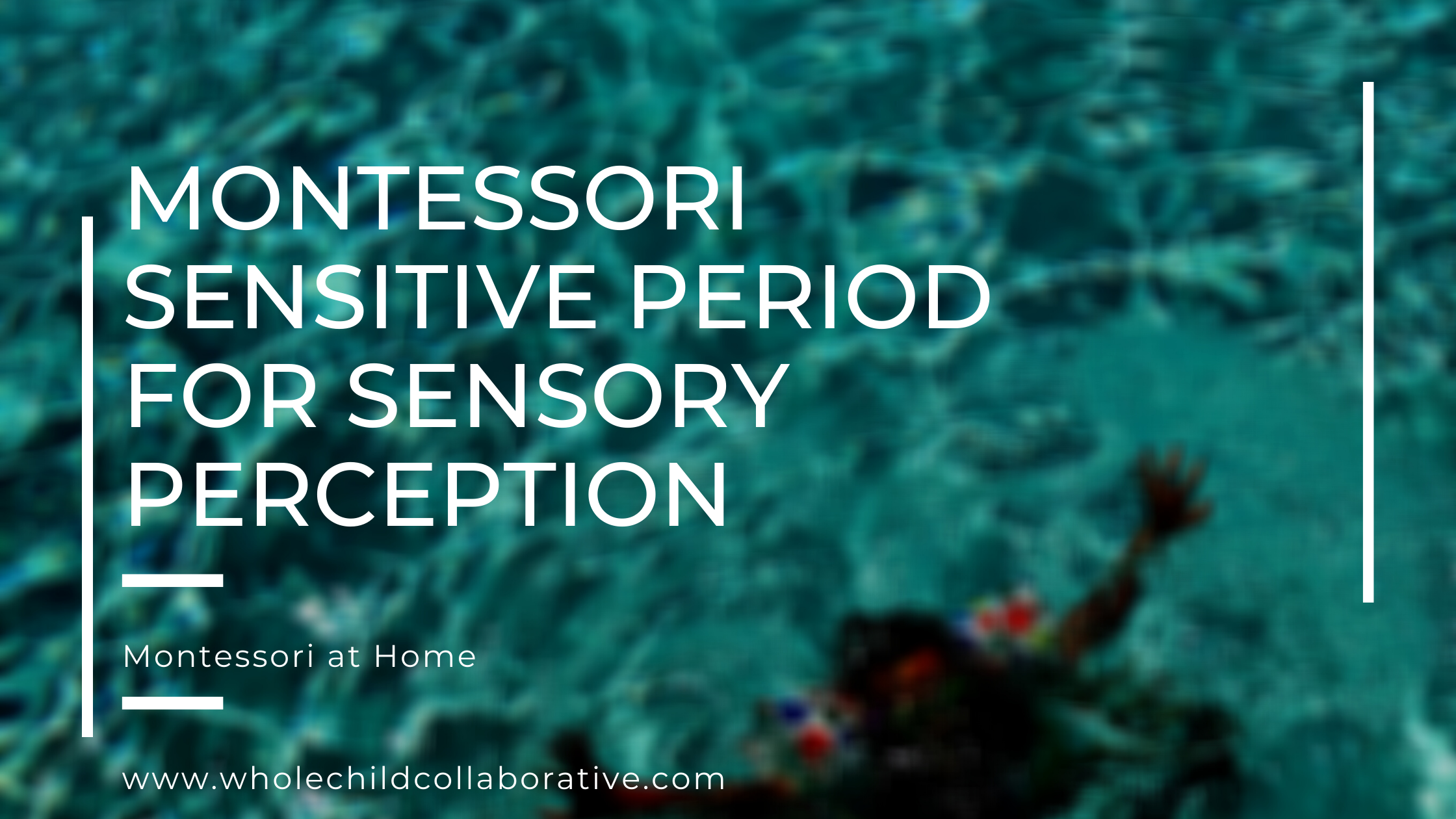Sensitive Periods: Sensory Perception
/Sensitive periods inform so much of Montessori practices. Understanding the sensitive periods of early development can inform your parenting practices in positive ways. Sensitive periods occur exclusively in the first plane of development, which is from birth to around age 6. During sensitive periods, children experience an explosion in certain areas of their development. These bursts in learning support the development of characteristics that they will carry with them for the rest of their life. The sensitive periods are order, language, sensory perception and coordination of movement. You can read more of an overview for sensitive periods here.
The sensitive period for sensory perception occurs from birth to around age 4.5. Young children are absorbing sensorial impressions around them and refining their five senses (taste, smell, touch, hearing and sight). Montessori classrooms capitalize on this by providing a sensorially rich environment and a whole curriculum area that educates the senses. With each sensorial material in the classroom, the sense that is being refined is isolated. For example, the pink tower is a material designed to refine the visual sense. Each cube is the same color, only changing in size. This isolation helps draw the child’s focus to the size of each cube. Lessons that refine the tactile sense use blindfolds to draw the child’s attention it the tactile qualities of the material.
Young children are keen observers of their environment. The sensitive period for sensory perception allows the child to classify all the sensorial impressions they are observing and taking in. The classifications that are created during this time support the development of both the intelligence and the memory. Sensorial impressions are the concrete images of abstract concepts that will be learned later in life. In the classroom, we give sensorial impressions of land and water through the sandpaper globe. Later on in their education, they build upon this sensorial impression by learning more about geography. Sensorial education supports the child’s individual development and connects the child to the world around them.
Education of the senses is not limited to a Montessori classroom! In the kitchen, you can draw attention to the smells and tastes of different ingredients. Listen to the pitches of different birds when you are outside. Provide opportunities to explore different textures and give a name to them. “This feels bumpy.” “This feels soft.” “This feels scratchy.” Explore different shades of colors. Limit time on screens with and worksheet activities so children don’t miss out on the sensorial opportunities around them. Children are already taking in the sensorial impressions that surround them wherever they go. You can support this sensitive period by drawing attention to the qualities of the sensorial impressions around them.





